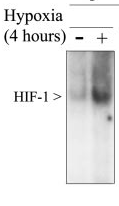Nobel Prize for Oxygen Sensing and Hypoxia: the Environmental Relevance of PhenomenaTiistai 8.10.2019 klo 9.37 - Mikko Nikinmaa One of the most conspicuous changes that occur in the aquatic environment is the increasing occurrence of hypoxic areas. The Nobel Prize in Physiology and Medicine is this year given to three scientists, Kaelin, Ratcliffe and Semenza, who have studied and discovered the mechanism of how oxygen deficiency controls gene expression in man. Compared to air-breathers, fish and other aquatic animals must get by with 1/30th of the oxygen concentration. They are further faced with marked variations in oxygen level both daily and seasonally (or unknown periods of time). Further, since fish are poikilothermic, temperature changes affect their oxygen requirements conspicuously. The oxygen sensing and transport system of fish must therefore be more v Given that oxygen is a limiting factor in aquatic environment, it is no surprise that HIF system in fish has evolved differently in different fish groups depending on their oxygen requirements. In continuation, the possibilities of fish to adapt to climate change and environmental pollution are markedly affected by what their HIF system is. Thus, the Nobel Prize winning studies have a significant environmental angle. This has been reviewed to some extent in Nikinmaa, M. and Rees, B.B. (2005) Oxygen-dependent gene expression in fishes. Am. J. Physiol. - Regul. Integr. Comp. Physiol. 288, 1079-1090 and in Prokkola, JM and Nikinmaa M (2018) Circadian rhythms and environmental disturbances - underexplored interactions. J. Exp. Biol. 221, jeb179267. The evolution of HIF system in animals was explored in Rytkönen KT et al (2011) Molecular Evolution of the Metazoan PHD–HIF Oxygen-Sensing System. Mol. Biol. Evol. 28: 1913-1926. |
|
Avainsanat: climate change, temperature, hypoxia, evolution, environmental pollution |

 ersatile than that of mammals. We have studied the oxygen sensing and hypoxia-inducible factor (HIF) system, i.e. the phenomena now awarded Nobel Prize, since the late 1990’s. First, we observed that hypoxia-inducible factor was present in cells already in normal venous oxygen tension, although it increased in hypoxia (in humans and laboratory rodents it is only found in hypoxic conditions). Second, we observed that although the hypoxia-inducible factor level was controlled posttranscriptionally, also gene transcription could be modified. The HIF transcription depended on the number of hypoxic bouts experienced by the animal (in humans the control of HIF level occurs posttranscriptionally). Finally, we observed that HIF level was affected by temperature (something that is irrelevant for us homeotherms). These facts, together with the observations of interactions between HIF and circadian rhythms and environmental pollutants show that the system given the Nobel Prize for is more versatile in poikilothermic water breathers than humans.
ersatile than that of mammals. We have studied the oxygen sensing and hypoxia-inducible factor (HIF) system, i.e. the phenomena now awarded Nobel Prize, since the late 1990’s. First, we observed that hypoxia-inducible factor was present in cells already in normal venous oxygen tension, although it increased in hypoxia (in humans and laboratory rodents it is only found in hypoxic conditions). Second, we observed that although the hypoxia-inducible factor level was controlled posttranscriptionally, also gene transcription could be modified. The HIF transcription depended on the number of hypoxic bouts experienced by the animal (in humans the control of HIF level occurs posttranscriptionally). Finally, we observed that HIF level was affected by temperature (something that is irrelevant for us homeotherms). These facts, together with the observations of interactions between HIF and circadian rhythms and environmental pollutants show that the system given the Nobel Prize for is more versatile in poikilothermic water breathers than humans.